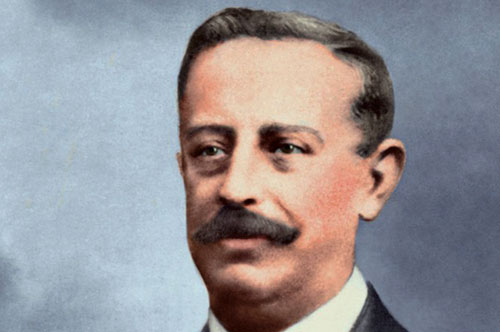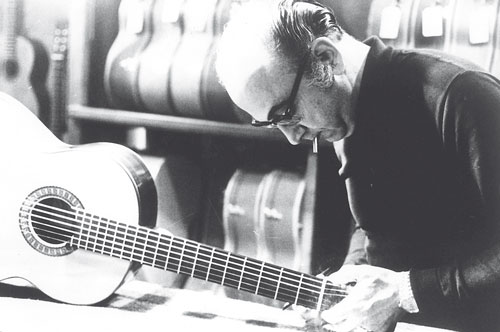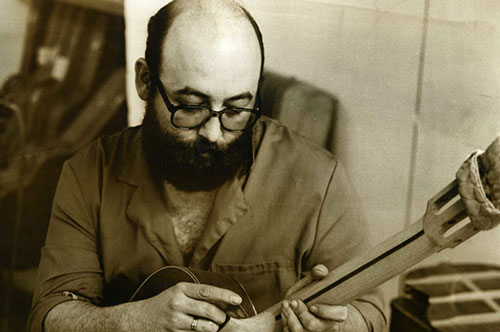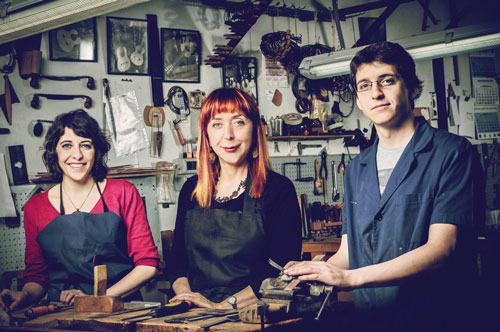

He was born in Madrid in May 1953 and, at the age of 18, became an apprentice in the guitar workshop
In 1977 he reached the rank of 1st category official and, in 1979, he made a guitar that was chosen by Andrés Segovia, without him knowing that it had been built by the young Ramírez since at that time all the labels were signed by his father, according to the tradition according to which the maestro signs all the guitars built in his workshop, as is logical.
Such was the joy of the young guitar maker that he gave it to him and excitedly wrote a dedication that he signed and glued next to the label. The teacher played that guitar in many of his concerts until the end of his days, everything is recorded in the letter that the teacher wrote to the guitar maker.
In 1991 he continued to build the guitar with all the sonic characteristics of the sixties that he called the “Traditional Model“. In addition, he started the project of another guitar with a new design that would express a clearer and more direct sound; It was adjusted to new trends and what he called the “Special Model“, was fully defined in 1992.
José Ramírez IV took care of detailing, developing and perfecting the models of his father, adapting them to the needs of the musicians of that time.
He also developed new construction techniques that made the instruments more comfortable and easier to play; in addition to being more stable in their assembly, avoiding in some cases, reducing in others, the deformations due to the movements of the wood.
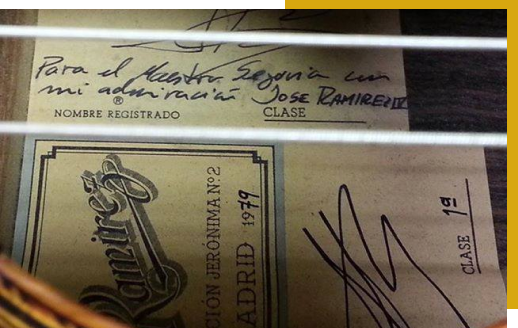
A valuable recognition came in 1979. Among several guitars that had been chosen to be taken to the maestro Andrés Segovia, was one built by him.
Another important chapter was that of studio guitars intended for beginners, students and musicians who wanted to amplify their instruments. We have to point out that already in the days of José Ramírez I, these guitars were sold in guitar stores as an alternative to handmade ones, which were naturally much more expensive and of a much higher quality.
At first, he did not put a label on them, but over time he realized the error since the picaresque appeared in the form of complaints about guitars that were claimed to have been bought in his store and, as they did not carry a label of his store, those claims could not be refuted. Finally, he had special labels made, different from the ones he put on professional models, and thus the problems were over.
As for José Ramírez II, he not only continued to sell series-built studio guitars but also designed other models to be made by the best manufacturers in Valencia at that time.
José Ramírez III, like his grandfather, did not like studio guitars, so he did not mind the slow disappearance of his father’s designs.
However, José Ramírez IV did not think so. He was very aware of the importance of these guitars so that beginners, students and musicians who wanted an amplified guitar could enjoy a lower-priced and simpler Ramírez guitar.
On the other hand, players who need to amplify their guitars in a group may find these instruments an option with less risk than doing a type of work similar to their handmade guitar. So in 1986, José Ramírez IV, convinced his father to jointly design a study line called “E”, manufactured exclusively for Ramírez with a special selection of woods.
Later, in 1991, coinciding with the changes made to the handcrafted models, José Enrique designed another line of studio guitars that was cheaper than the previous one and called it “R”, based on the C86 professional model template.
Unfortunately, he died young, in 2000, with which he had little time to increase the school, being his only disciple Ricardo Sáenz, although he also shared with his father the training of his sister Amalia.
